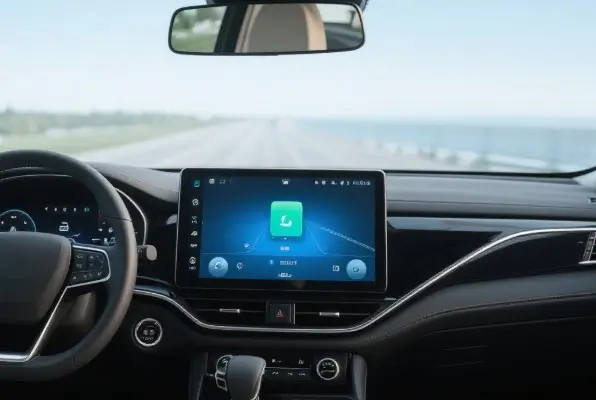If you’ve ever marveled at the buttery-smooth autofocus of a smartphone camera or watched a surgical robot perform a delicate stitch, you’ve witnessed the magic of micro linear servo motors. These unassuming devices, often no larger than a thumbnail, are the unsung heroes of modern motion control. They’re the reason your gadgets feel intuitive, your car’s safety systems react instantly, and factories hum with efficiency. But what makes them so revolutionary? Let’s peel back the layers.

The Anatomy of Precision
At their core, micro linear servo motors convert electrical energy into precise linear motion—think “push and pull” instead of “spin.” Traditional rotary motors rely on gears and belts to translate rotational force into linear movement, which introduces friction, lag, and mechanical complexity. Micro linear servos cut out the middleman. Using a combination of permanent magnets, coils, and feedback sensors, they achieve motion directly along a straight path. The result? Near-instantaneous response times, sub-micron accuracy, and whisper-quiet operation.
Take the voice coil actuator, a common type of micro linear motor. It’s simple: a coil sits within a magnetic field, and when current flows, the coil moves linearly. Add a position sensor (like a Hall effect device or optical encoder), and you’ve got a closed-loop system that self-corrects in real time. This marriage of simplicity and intelligence is why these motors thrive in spaces where every micrometer—and millisecond—counts.
Why Smaller Is Smarter
The push for miniaturization isn’t just about saving space. As devices shrink, their components must work harder in tighter environments. Micro linear servos excel here because they eliminate bulky transmission systems. In smartphones, for example, they adjust camera lenses faster than a blink, enabling features like optical image stabilization. In wearable health monitors, they control micro-pumps that deliver precise drug doses. Even your wireless earbuds likely use them to create haptic feedback—tiny vibrations that make touch controls feel tangible.
But the real game-changer is their energy efficiency. Without gears grinding or belts slipping, these motors waste minimal power as heat. That’s critical for battery-powered devices. A smartwatch using a micro linear servo for its crown scroll mechanism can sip power so frugally that users forget charging exists.
From Labs to Living Rooms
One of the most compelling stories lies in medical technology. Surgical robots like the da Vinci system rely on micro linear servos to translate a surgeon’s hand movements into scaled, tremor-free motions. The motors’ ability to deliver force feedback—letting surgeons “feel” tissue resistance—is transforming minimally invasive procedures. Meanwhile, in labs, automated pipetting systems use these motors to handle nanoliter-scale liquid samples, accelerating drug discovery.
Consumer tech isn’t far behind. DSLR cameras once dominated photography, but smartphones now rival their quality thanks in part to micro linear motors adjusting lens elements on the fly. Even gaming controllers are joining the party: adaptive triggers in devices like the PlayStation 5 DualSense use micro servos to simulate tension, making pulling a bowstring or accelerating a car feel tactilely authentic.
The Quiet Revolution in Automation
While consumer gadgets grab headlines, micro linear servo motors are quietly overhauling industrial automation. Traditional assembly lines use pneumatic cylinders or rotary servos for repetitive tasks, but they’re loud, energy-hungry, and limited in precision. Enter micro linear servos. In electronics manufacturing, they position circuit boards with laser-guided accuracy, place surface-mount components, and even test USB-C ports by mimicking thousands of insertions. The result? Fewer defects, faster production, and factories that sound more like libraries than machine shops.
Collaborative robots (cobots) are another frontier. Unlike hulking industrial robots confined to cages, cobots work alongside humans. Micro linear servos give them the finesse to handle fragile items like glassware or pastries without crushing them. Stäubli’s TX2 series, for instance, uses these motors to achieve “human-like” dexterity, making automation viable for small-batch, artisanal production.
Breaking Barriers in Aerospace and Automotive
In aerospace, every gram matters. Micro linear servos are replacing hydraulic actuators in aircraft wing flaps and landing gear systems, slashing weight and maintenance needs. Their fail-safe operation is equally vital: in Boeing’s 787 Dreamliner, they adjust cabin pressure valves with reliability that’s non-negotiable at 40,000 feet.
Electric vehicles (EVs) are leveraging them too. Tesla’s “megacasting” technique for car frames requires molds aligned with microscopic precision—a job for micro linear servos. They’re also inside battery management systems, ensuring cooling plates expand/contract evenly to prevent leaks. And let’s not forget autonomous driving: these motors adjust LiDAR sensors in real time to keep scans accurate, even on potholed roads.
The Art of the Possible
Sometimes, innovation defies expectations. Artist Ben Snell recently used micro linear servos in a kinetic sculpture that “evolves” its shape based on audience biometric data. Each motor responds to heart rate monitors, creating a visceral link between viewer and art. Meanwhile, MIT’s Tangible Media Group is prototyping shape-shifting furniture—a table that morphs into a chair using servo-driven actuators.
What’s Next?
The future hinges on smarter integration. Researchers are embedding AI directly into motor controllers, enabling predictive adjustments. Imagine a factory robot that anticipates a misaligned part before it happens, or a prosthetic hand that learns grip patterns based on muscle signals. Material science is also pushing boundaries: graphene-coated coils could reduce heat dissipation, while 3D-printed magnetic circuits might allow custom motor geometries.
Sustainability is another focus. Companies like LinMot are developing motors with recyclable rare-earth magnets, addressing ethical concerns around mineral mining. And as solar-powered IoT devices proliferate, ultra-low-power micro servos will become key to energy-neutral systems.
The Bigger Picture
Micro linear servo motors are more than components—they’re enablers of a frictionless future. By marrying precision with adaptability, they’re dissolving the line between the digital and physical worlds. Whether it’s a robot folding your laundry, a satellite adjusting its solar sails, or a device not yet imagined, these tiny titans will be there, quietly powering progress. The next time your phone camera snaps a flawless shot, take a second to appreciate the invisible engineering marvel that made it possible. After all, the future moves in straight lines—and it’s smaller than you think.











































